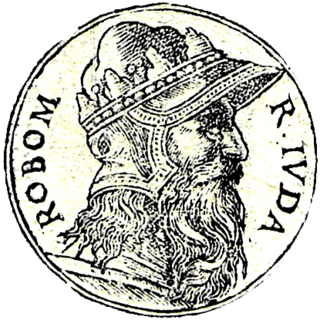
Rehoboam was, according to the Hebrew Bible, the first monarch of the Kingdom of Judah after the split of the united Kingdom of Israel. He was a son of and the successor to Solomon and a grandson of David. In the account of I Kings and II Chronicles, Rehoboam saw his rule limited to only the Kingdom of Judah in the south following a rebellion by the ten northern tribes of Israel in 932/931 BCE, which led to the formation of the independent Kingdom of Israel under the rule of Jeroboam in the north.
The 970s BC is a decade which lasted from 979 BC to 970 BC.
The New Chronology is an alternative chronology of the ancient Near East developed by English Egyptologist David Rohl and other researchers beginning with A Test of Time: The Bible - from Myth to History in 1995. It contradicts mainstream Egyptology by proposing a major revision of the established Egyptian chronology, in particular by re-dating Egyptian kings of the Nineteenth through Twenty-fifth Dynasties, bringing forward conventional dating by up to 350 years. Rohl asserts that the New Chronology allows him to identify some of the characters in the Hebrew Bible with people whose names appear in archaeological finds.
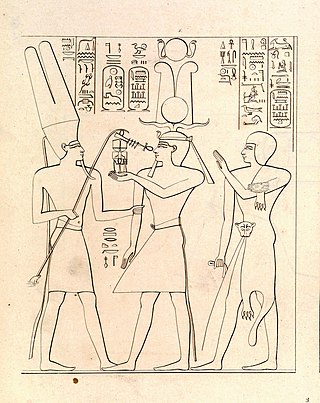
Hedjkheperre Setepenre Shoshenq I —also known as Shashank or Sheshonk or Sheshonq I—was a pharaoh of ancient Egypt and the founder of the Twenty-second Dynasty of Egypt. Of Meshwesh ancestry, Shoshenq I was the son of Nimlot A, Great Chief of the Ma, and his wife Tentshepeh A, a daughter of a Great Chief of the Ma herself; Shoshenq was thus the nephew of Osorkon the Elder, a Meshwesh king of the 21st Dynasty. He is generally presumed to be the Shishak mentioned in the Hebrew Bible, and his exploits are carved on the Bubastite Portal at Karnak.
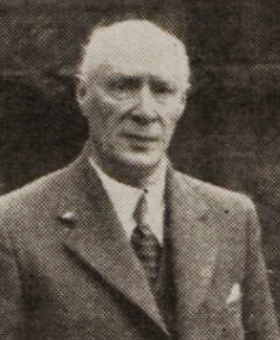
James Lewis Thomas Chalmers Spence was a Scottish journalist, poet, author, folklorist and occult scholar. Spence was a Fellow of the Royal Anthropological Institute of Great Britain and Ireland, and vice-president of the Scottish Anthropological and Folklore Society. He founded the Scottish National Movement.
Shishak, also spelled Shishaq or Susac, was, according to the Hebrew Bible, an Egyptian pharaoh who sacked Jerusalem in the 10th century BCE. He is usually identified with the pharaoh Shoshenq I.
Kenneth Anderson Kitchen is a British biblical scholar, Ancient Near Eastern historian, and Personal and Brunner Professor Emeritus of Egyptology and honorary research fellow at the School of Archaeology, Classics and Egyptology, University of Liverpool, England. He specialises in the ancient Egyptian Ramesside Period, and the Third Intermediate Period of Egypt, as well as ancient Egyptian chronology, having written over 250 books and journal articles on these and other subjects since the mid-1950s. He has been described by The Times as "the very architect of Egyptian chronology".

Hedjkheperre Setepenre Takelot II Si-Ese was a pharaoh of the Twenty-third Dynasty of Ancient Egypt in Middle and Upper Egypt. He has been identified as the High Priest of Amun Takelot F, son of the High Priest of Amun Nimlot C at Thebes and, thus, the son of Nimlot C and grandson of king Osorkon II according to the latest academic research. Based on two lunar dates belonging to Takelot II, this Upper Egyptian pharaoh is today believed to have ascended to the throne of a divided Egypt in either 845 BC or 834 BC. Most Egyptologists today, including Aidan Dodson, Gerard Broekman, Jürgen von Beckerath, M.A. Leahy and Karl Jansen-Winkeln, also accept David Aston's hypothesis that Shoshenq III was Osorkon II's actual successor at Tanis, rather than Takelot II. As Aidan Dodson and Dyan Hilton write in their comprehensive book on the royal families of Ancient Egypt:
Takelot II is likely to have been identical with the High Priest Takelot F, who is stated in [the] Karnak inscriptions to have been a son of Nimlot C, and whose likely period of office falls neatly just before Takelot II's appearance.

Deuteronomistic history of the Hebrew Bible describes a United Monarchy or United Kingdom of Israel existing under the reigns of Saul, David, and Solomon, encompassing the territories of both the later kingdoms of Judah and Israel.
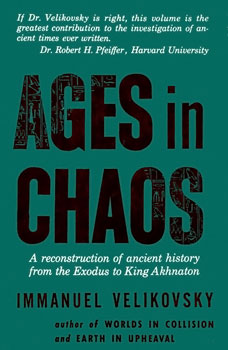
Ages in Chaos is a book by the controversial writer Immanuel Velikovsky, first published by Doubleday in 1952, which put forward a major revision of the history of the Ancient Near East, claiming that the histories of Ancient Egypt and the Israelites are five centuries out of step. He followed this with a number of other works where he attempted to complete his reconstruction of ancient history, collectively known as the Ages in Chaos series.

The majority of Egyptologists agree on the outline and many details of the chronology of Ancient Egypt. This scholarly consensus is the so-called Conventional Egyptian chronology, which places the beginning of the Old Kingdom in the 27th century BC, the beginning of the Middle Kingdom in the 21st century BC and the beginning of the New Kingdom in the mid-16th century BC.
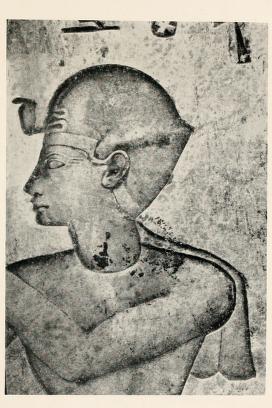
Neterkheperre or Netjerkheperre-Setepenamun Siamun was the sixth pharaoh of Egypt during the Twenty-first Dynasty. He built extensively in Lower Egypt for a king of the Third Intermediate Period and is regarded as one of the most powerful rulers of the Twenty-first Dynasty after Psusennes I. Siamun's prenomen, Netjerkheperre-Setepenamun, means "Divine is The Manifestation of Ra, Chosen of Amun" while his name means 'son of Amun.'
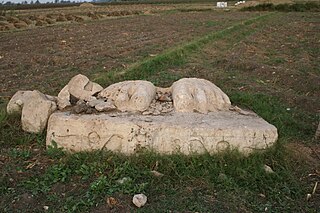
Pi-Ramesses was the new capital built by the Nineteenth Dynasty Pharaoh Ramesses II at Qantir, near the old site of Avaris. The city had served as a summer palace under Seti I, and may have been founded by Ramesses I while he served under Horemheb.
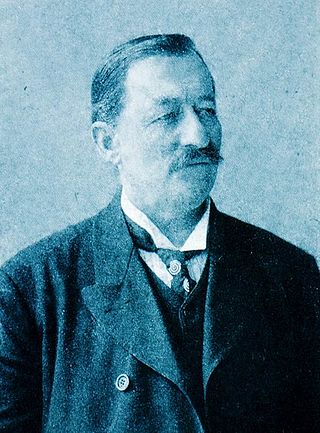
Gottlieb Schumacher was an American-born civil engineer, architect and archaeologist of German descent, who was an important figure in the early archaeological exploration of Palestine.
Robert George Morkot, FSA is an archaeologist and academic, specialising in Ancient Egypt. He is a Senior Lecturer in Archaeology at the University of Exeter. His current research is focused on the external relations of Ancient Egypt, particularly the relations with Kush (Sudan). He also works on the historiography of Ancient Egypt.

The Bible makes reference to various pharaohs of Egypt. These include unnamed pharaohs in events described in the Torah, as well as several later named pharaohs, some of whom were historical or can be identified with historical pharaohs.
The Hallstatt plateau is a term used in archaeology that refers to a consistently flat area on graphs that plot radiocarbon dating against calendar dates. Radiocarbon dates of around 2450 BP always calibrate to c. 800–400 BC, no matter the measurement precision. The carbon 14 dating method is hampered by this large plateau on the calibration curve in a critical period of human technological development. Just before and after the plateau, calibration is accurate; during the plateau only techniques like wiggle matching can yield useful calendar dates. The plateau is named after the Hallstatt culture period in central Europe with which it coincides.

According to the First Book of Kings and the Second Book of Chronicles of the Hebrew Bible, Jeroboam's Revolt was an armed insurrection against Rehoboam, king of the United Monarchy of Israel, and subsequently the Kingdom of Judah, led by Jeroboam in the late 10th century BCE. The conflict, referring to the independence of the Kingdom of Samaria and the subsequent civil war during Jeroboam's rule, is said to have begun shortly after the death of Solomon lasting until the Battle of Mount Zemaraim. The conflict began due to discontent under the rule of Solomon's successor, his son Rehoboam, and was waged with the goal of breaking away from the United Monarchy of Israel. Though this goal was achieved very early on in the conflict, the war continued throughout the duration of Rehoboam's reign and well into the reign of his son, Abijam, who defeated the armies of Jeroboam but failed to reunite the kingdoms.

2 Chronicles 12 is the twelfth chapter of the Second Book of Chronicles the Old Testament in the Christian Bible or of the second part of the Books of Chronicles in the Hebrew Bible. The book is compiled from older sources by an unknown person or group, designated by modern scholars as "the Chronicler", and had the final shape established in late fifth or fourth century BCE. This chapter belongs to the section focusing on the kingdom of Judah until its destruction by the Babylonians under Nebuchadnezzar and the beginning of restoration under Cyrus the Great of Persia. The focus of this chapter is the kingdom of Israel's division in the beginning of Rehoboam's reign.

1 Kings 14 is the fourteenth chapter of the Books of Kings in the Hebrew Bible or the First Book of Kings in the Old Testament of the Christian Bible. The book is a compilation of various annals recording the acts of the kings of Israel and Judah by a Deuteronomic compiler in the seventh century BCE, with a supplement added in the sixth century BCE. 1 Kings 12:1 to 16:14 documents the consolidation of the kingdoms of northern Israel and Judah: this chapter focusses on the reigns of Jeroboam and Nadab in the northern kingdom and Rehoboam in the southern kingdom.













